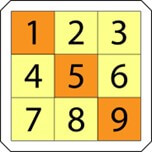Updated January 31, 2023
Introduction to Normal and Trace of a Matrix in Java
A matrix is a rectangular array of numbers arranged in rows and columns. The normal and trace of a matrix are two important characteristics that provide valuable information about the matrix. In linear algebra, matrices are widely used to represent and manipulate data in various fields, such as computer science, physics, and statistics.
- Normal of a matrix is a proportion of the size or magnitude of a matrix.
- Trace is the amount of the diagonal elements of the matrix. In this article, we will introduce these concepts and show how they can be calculated in Java.
Key Takeaways
- The normal of a matrix and trace of a matrix are scalar values, which means they are single values that represent the overall size or sum of the diagonal elements of a matrix.
- The normal of a matrix and trace of a matrix can be used to understand the properties and characteristics of a matrix, such as its size and diagonal elements.
- Both normal and trace can be calculated in Java using the normF() and trace() methods, respectively,
- They can be useful in various fields, such as linear algebra, statistics, and machine learning.
What is Normal of a Matrix?
The normal of a matrix is a measure of its size or magnitude, calculated as the square root of the sum of the squares of the matrix’s all elements. It is a scalar value that represents the overall size of the matrix. It is also known as the Frobenius norm.
For example,
1. Consider the matrix A = {{1, 2, 3}, {4, 5, 6}, {7, 8, 9}}.
2. Here, we calculate the sum of Square roots for all the values.
12 + 22 + 32 + 42 + 52 + 62 + 72 + 82 + 92
= 1 + 4 + 9 + 16 + 25 + 36 + 49 + 64 + 81
= 285
3. Now, we calculate the square root for 285, which is 16.881943016134134.
Input:
- This example creates a matrix A using the double array {{1, 2, 3}, {4, 5, 6}, {7, 8, 9}}.
- The normal of A is then found using the normF() method.
Code:
import Jama.Matrix;
public class MatrixNormal {
public static void main(String[] args) {
double[][] matrixData = {{1, 2, 3, 4, 5, 6, 7, 8, 9}};
Matrix A = new Matrix(matrixData);
// Find the normal of matrix A
double normal = A.normF();
System.out.println("Normal of A: " + normal);
}
}Output:
- This output shows the normal of matrix A, which is 16.881943016134134.
- The normal of matrix A is the square root of the sum of the squares of the matrix’s elements.
- In this case, the elements of matrix A are 1, 2, 3, 4, 5, 6, 7, 8, and 9.
- The sum of the squares of these elements is 12 + 22 + 32 + 42 + 52 + 62 + 72 + 82 + 92 = 285 and the square root of 285 is 16.881943016134134.
What is Trace of a Matrix?
The trace of a matrix is the sum of the elements on its main diagonal (top-left to bottom-right). It is a scalar value that represents the sum of the diagonal elements of a square matrix. It can also be thought of as the sum of the eigenvalues of a matrix.
For example,
The trace of matrix A = {{1, 2, 3}, {4, 5, 6}, {7, 8, 9}} is 1 + 5 + 9 = 15.
Input:
- This example creates a matrix A using the double array {{1, 2, 3}, {4, 5, 6}, {7, 8, 9}}.
- The trace of A is then found using the trace() method.
Code:
import Jama.Matrix;
public class MatrixNormal {
public static void main(String[] args) {
double[][] matrixData = {{1, 2, 3}, {4, 5, 6}, {7, 8, 9}};
Matrix A = new Matrix(matrixData);
// Find the normal of matrix A
double trace= A.trace();
System.out.println("Trace of A: " + trace);
}
}Output:
- This output shows the trace of matrix A which is 15.0. Trace is the sum of the diagonal elements of the matrix.
- In this case, the diagonal elements of the matrix A are 1, 5, and 9, which sum up to 15.
Examples to Find Normal and Trace of a Matrix in Java
In Java, the normal and trace of a matrix can be easily calculated using the method normF() and trace() respectively.
Example #1
To find the normal and trace of matrix A in Java, we can use the following code:
Code:
import Jama.Matrix;
public class MatrixNormalTrace {
public static void main(String[] args) {
double[][] matrixData = {{1, 2, 3}, {4, 5, 6}, {7, 8, 9}};
Matrix A = new Matrix(matrixData);
// Find the normal of matrix A
double normal = A.normF();
System.out.println("Normal of A: " + normal);
// Find the trace of matrix A
double trace = A.trace();
System.out.println("Trace of A: " + trace);
}
}Output:
Example #2
To find the normal and trace of matrix A = {{2, 3, 4}, {5, 6, 7}, {8, 9, 10}} in Java:
Code:
import Jama.Matrix;
public class MatrixNormalTrace {
public static void main(String[] args) {
double[][] matrixData = {{2, 3, 4}, {5, 6, 7}, {8, 9, 10}};
Matrix A = new Matrix(matrixData);
// Find the normal of matrix A
double normal = A.normF();
System.out.println("Normal of A: " + normal);
// Find the trace of matrix A
double trace = A.trace();
System.out.println("Trace of A: " + trace);
}
}Output:
Difference between Normal and Trace of Matrix
| Normal of Matrix | Trace of Matrix |
| The normal of a matrix is a measure of its size or magnitude. | The trace of a matrix, on the other hand, is the sum of its diagonal elements. |
| The normal of a matrix is calculated as the square root of the sum of the squares of the matrix’s eigenvalues. | It is calculated as the sum of the eigenvalues of a matrix. |
| The normal gives an idea of the overall size or magnitude of the matrix. | While the trace provides information about the matrix’s eigenvalues. |
Conclusion
In conclusion, the normal and trace of a matrix are both important characteristics that can be calculated and used in various applications such as linear algebra, statistics, and machine learning. Understanding how to calculate these values in Java can be useful for data analysis and manipulation tasks.






